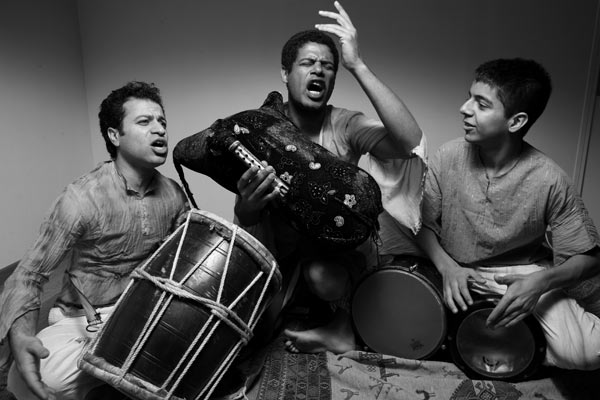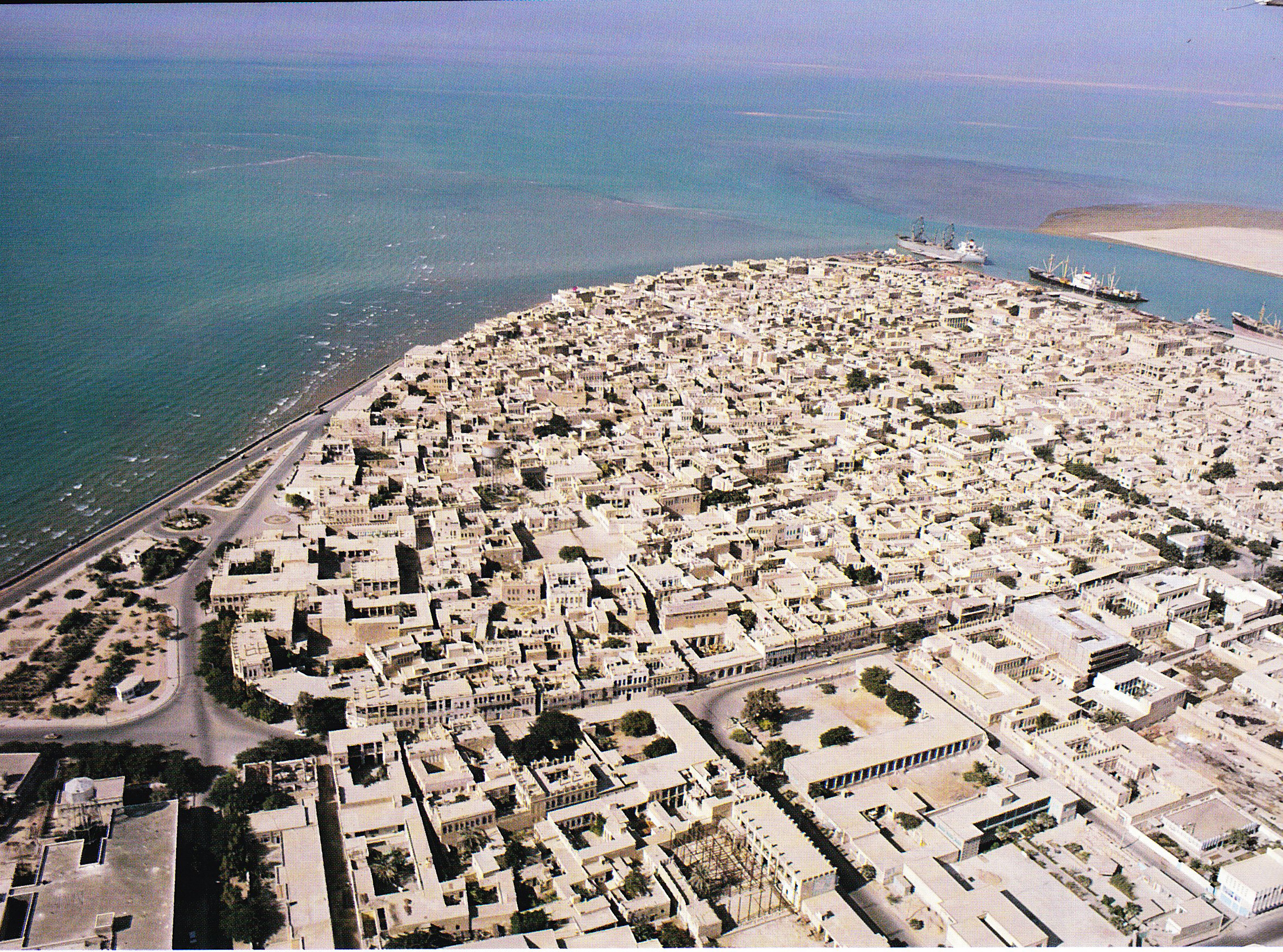A guest post by Kamyar Jarahzadeh, a student at UC Berkeley focusing on migration and forced migration in Turkey and the Middle East. Read his earlier post on Iranian pop music.

Persian art music is a major part of the Iranian musical tradition, but, often times, it seems to be the only musical tradition in the country worthy of mention. In the few Iranian-fusion projects that gain some space in the American musical sphere, mainstream Persian projects like the Rumi Symphony are most likely to gain outside attention. This project and others like it are valuable forays into staples of Iranian culture, yet problems arise when we start to believe that this Persian tradition is the only one of value among all of Iran’s various musical and cultural traditions.
Sadly, this is often the case as Iranian musician Saeed Shanbehzadeh recently expressed in an interview on the popular talk show Parazit. Shanbehzadeh’s music draws on the musical traditions of Bushehr in the south of Iran—a region historically populated mostly by Iranians of African and or Arab descent. The resulting musical style has direct roots in Arabic and African musics, giving it a very different sound compared to traditional Persian music. Even the instruments he plays are regionally specific and generally not found on websites claiming to showcase “Iranian instruments.”
Saeed Shanbehzadeh’s interview on Voice of America
In his interview, however, Shanbehzadeh discusses the challenges he faces as an Iranian attempting to gain respect playing non-Persian music. In the first second of the interview, the interviewer asks him if he plays “Bandari” music. Although “Bandari” literally means a style “of the port,” in modern Iranian public discourse it has come to refer to any song that simply carries a type of beat used in the Bushehri style of music.
In this context, Bandari has a connotation that calls to mind an entire genre of poorly made pop music that layers the South Iranian “Arab” beat with typical Persian lyrics about love. More often than not, when Persian Iranians are singing Bandari, it is a sort of novelty performance of “playing” Afro-Iranian. As the following video shows, the singer is doing a watered-down version of traditional Bushehri dance, and singing about motifs that people in Iran associate with the south: the ocean, waves, and love.
Shahrareh’s “Dokhtar Abadani,” produced in Los Angeles
Yet in reality, Bushehri and other southern musical forms are complex musical traditions with different styles for different occasions, such as meditation music and protest songs, all in addition to the famous Bandari-style music so familiar to mainstream Iranian audiences. However, mainstream pop reproductions of Southern Iranian music and culture fixate solely on the fun, “Bandari” style.
This essentialization of Southern Iranian music creates certain roles that Iranian minorities are required to fill in order to have a place in mainstream cultural discourse. In this context, the dark-skinned Afro-Iranian is stripped of any cultural diversity and is sambo-ified to become a happy, carefree people whose lack of representation in society is justified by his or her frivolity. As a result, modern representations of Southern Iranian culture typically manifest as appropriated forms more than forms resembling reality–leaving many outsiders ignorant of the reality and complexity of Southern Iranian culture.
Sure, Shanbehzadeh plays “Bandari” dance music, but that’s not the whole story. To draw another analogy, asking if Shanbehzadeh’s plays Bandari music would be like asking Bob Dylan if he played “country” music. Although such a moniker in both cases is somewhat accurate, it’s not the whole story. In one part of the interview, he recounts how other Iranian musicians, when asked about him, still mislabel him a “Bandari” musician rather than a Bushehri one.

He goes on to describe the mainstream Iranian view of his culture as an essentialized one. He recounts:
“I remember in Tehran we would perform, and they would say to us ‘Oh you Bandari kids, good for you!’ as if we’re just a cliché that in the south of Iran, we just have the one Bandari rhythm, and we’re a simple people, and we go fishing, and we don’t have any culture, or poems, or philosophy.”
What Shanbehzadeh is describing are the very effects of the Persian-centric construction of Iranian culture that has come to dominate spheres in Iran and in the diaspora. This ethnocentric disregard for non-Persian cultures in Iran plays itself out with special clarity in the realm of what is allowed to be considered traditional Iranian music. For example, a simple Google search for “Iranian Instruments” leads one to sites like this page and others like it, which claim to discuss the various traditional musical instruments of Iran while focusing heavily on the staple instruments of the Persian music heritage. The instruments shown on those websites, such as the tar, tombak, and setar, are staples of the Persian music heritage. But many instruments that are important to other Iranian musical traditions are nowhere to be found on those websites. Take for example, the nay-anban. In the video below, we see Shanbehzadeh himself playing a nay-anban in the style of Bushehr’s music tradition.
Shanbehzadeh on the nay-anban
The video rightly describes the instrument as “one of the most traditional instruments of Bushehri music.” Despite this fact, this staple instrument for an entire region of Iran has no place in many of the websites that claim to showcase “traditional Iranian instruments” and outside of the context of “local” or “regional” music is rarely considered as part of the canon of Iranian traditional music. Instead, most well-known instruments either belong solely to the heritage of Persian traditional music (known as Persian art music or sonati) or are described only in relation to that musical tradition.
The differing attitudes of Iranians towards the Persian art music versus more local forms reflect a lot about mainstream prejudice today and the continuing tendency to favor and value Persian forms of Iranian music more than any other. The lack of respect or attention given by mainstream Iranian media suggests that the Iranian mainstream still has an issue of marginalizing cultures and traditions that stray from supposedly distinct and pure “Persianness.”

Even as the Iranian state has de-emphasized the Persian ethnocentrism of its predecessor, the continued attitudes of neglect and belittlement shown towards these music traditions in Iran and the diaspora suggest that the Persianizing project that began in the 20th century continues to this day. To truly create an Iranian culture that is inclusive of other cultures, “tolerating” diverse traditions is not enough. It requires an active respect for alternative traditions that luckily, musicians like Shanbehzadeh are slowly working to cultivate. Shanbehzadeh has worked to earn Bushehri music a respected place among esteemed world music traditions, even if he has been more successful outside of Iran than within the country itself.
Ultimately, this is more than just an issue for music lovers or so-called “ethnomusicologists.” The implications of this kind of marginalization of non-Persian cultures in Iran serve to downplay the nuances of Iran’s heritage and the reality of its current demographics. The provincialization of different cultural traditions not only conflates Iranianness with Persianness, but shrinks the whole sphere of what is “Iranian” in every direction. While an essentialized Persian identity has come in and out of use by various groups, its legacy lingers especially among diaspora communities.
Luckily, not only are many of these traditions still around to be enjoyed, explored, and encouraged, but modern artists continue to draw on them and reinterpret them to fit current contexts. As their work continues, artists like Shanbehzadeh will hopefully reclaim the prestige of their cultural backgrounds and recontextualize them in an increasingly transnational and transcultural Iranian modernity.












16 comments
Mr. Jarahzadeh,
It is refreshing to read your article. Persian ethnocentrism has been detrimental to non-Persians of Iran and has harmed Iran’s cultural heritage. The new regime has continued the same old policies of persianization of Iran’s ethnic groups. Besides neglect and belittling, non-persian artists have been arrested and banned from performing or teaching their traditions, only because they are not persian. There’re so many examples from north to south and east to west, no need to provide specifics. It is essential for the future of Iran that Persians think beyond the persian chauvinism and open up to true democracy. Your article is a step in the right direction. Thank you!
Don’t like Persian ethnocentrism? Too bad, you can move to another country. This is our country, there is no room for other cultures.
God willing we will destroy and remove all non-Persian aspects in Iran, we will purify our land, just wait and see. The same goes for liberal and communist Iranians, we will see you hanging in from the trees. You are all traitors.
Iran will become a homogenous society, there is no room for “democracy” in Iran, what Iran needs is totalitarianism and fascism.
I agree with you on removing Africans, Balochis, and Arabs from Iran and creating a new Iran/Persia but we need to have democracy and we have to be more european to bring standard of living up. We should demolish every house that’s built from sand or mud and rebuild those homes with stone. We will do this not only in the Persian Gulf region, but also Kerman, Semnan, Yazd, and Sistan va Balochestan.
What a shame. To think that the culture and history of Iran developed from a position of isolationism and xenophobia.
Iran’s greatest strength was, and always will be, her ability to absorb external influences and make them her own. This has been seen time and time again throughout the history of Iranshahr.
Iran without ‘non-persian’ is not Iran.
excellent piece!thank you
hs
Nahavandi is full of hatred. There’s no place in the world for these people, and there’s certainly no place for these racist comments on the ajam website. I request the editor to remove Nahavandi’s incitation for violence and racism.
Who told you Bandari music rose under “arab” influence? It rose under the influence of the Persian Gulf region who used to play the instruments when sailing in the waters.
Thank you for your very interesting article. Like everywhere else ,here are also some comments i first believed it was a joke. But fashism is active in Iran too
….